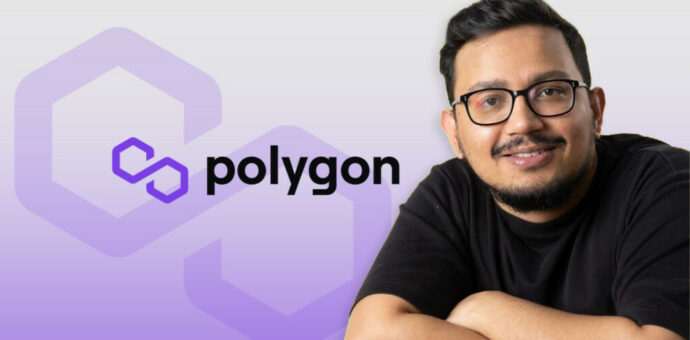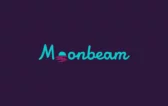Polygon is a blockchain network aimed at solving the issues with the Ethereum network. Based on smart contracts and decentralized finance protocols (DeFi), Polygon is currently one of the leading platforms in the crypto market.
The Polygon network was founded in 2017 and was previously called Matic Network. That name has been retained for the platform’s token, MATIC. In the crypto market, Polygon is known as an interconnection network between projects created from Ethereum.
The Polygon network currently has more than 19 thousand decentralized applications (dApps). In the crypto market, the platform serves as an alternative to the Ethereum network, offering more scalability for smart contracts trading and reducing the cost of user fees.
What is the Polygon platform?
The name Polygon represents the technology behind the MATIC crypto asset. By providing solutions for the Ethereum network, the platform acts as a second blockchain layer.
Rather than duplicating the functionalities of the Ethereum network, Polygon works in parallel to the ether (ETH) digital currency main blockchain. Before The Merge update, the Ethereum network could process up to 15 transactions per second, while Polygon is capable of processing 7 thousand transactions in just one second.
However, even with the increased scalability of the Ethereum network after The Merge, the Polygon network continues to attract investors because it offers faster transaction speed and lower operating costs.
Polygon crypto asset
The leading crypto asset of Polygon is the matic network. Also known by the acronym MATIC, the digital currency is used as a fee in the platform’s transactions and is considered one of the main assets of the crypto market.
Like the major tokens of the decentralized finance market (DeFi), MATIC uses the proof-of-stake consensus mechanism to validate smart contracts on the blockchain.
In addition to its use in transaction fees on the network, MATIC works as Polygon’s decentralized governance system. In total, the crypto asset will be issued up to 10 billion units, and the current capitalization of the currency is US$ 7.6 billion.
According to TradingView data, each unit of MATIC is trading at around US$ 0.87 in the crypto market in early 2023. There are 8.7 billion units of the crypto asset in circulation, and MATIC is one of the top ten digital currencies in the crypto market today.
Advantages and disadvantages
Because it represents a parallel platform to Ethereum, Polygon has some advantages related to the main network. One of the most significant benefits is related to the reduction in transaction costs.
In addition, Polygon can process transactions faster than Ethereum as it features more scalability for operations on the core network. The increased adoption of the platform as an alternative to Ethereum may further boost MATIC in the crypto market.
On the other hand, Polygon’s blockchain is not considered autonomous and proprietary, which can be perceived as a disadvantage for the platform. In addition, adopting MATIC off the network is also a challenge for developers, and its use as a payment method is not yet recurring.
Solana is the main competitor to Polygon and Ethereum in the crypto market today. Both platforms develop alternative solutions to the Ethereum network, focusing on DeFi, NFTs, and mobile.
Polygon creates solutions involving decentralized finance (DeFi) and the zkEVM Virtual Machine, and aims to become a parallel blockchain to the Ethereum network, rather than representing only a second layer to the platform. Meanwhile, Solana is turning its attention to the NFT market and betting on smartphone blockchain solutions.
Main dApps
By presenting an ecosystem capable of supporting the development of Ethereum-compatible decentralized applications (dApps), Polygon is used to support the creation of essential projects in the crypto market.
JellySwap is one of the main dApps developed at Polygon. This platform works as a decentralized exchange and allows interoperability in transactions between Ethereum and second-layer blockchains, offering fast and low-cost transactions.
QuickSwap, considered the most popular decentralized exchange (DEX) in the crypto market, is a fork of UniSwap and was developed through Polygon. The platform offers compatibility with ERC-20 tokens using an automated model for transactions.
Polygon also offers support for Opacity (OPCT), used as a decentralized file storage and exchange platform. OPCT uses an encrypted data management system where only users can access the documents stored in the DApp.
Like Opacity, Mai Finance has used Polygon technology to create a decentralized lending platform in the crypto market. The DApp runs through the Mai stablecoin and offers loans collateralized in crypto assets such as bitcoin.
Rollup solution
Even with the transition to the proof-of-stake mechanism on Ethereum at the end of 2022, the network has failed to solve one of the platform’s main problems: the high cost of transactions.
Trying to reduce these fees, the developers at Polygon plan to soon launch a scalability solution for Ethereum, which will act as a second layer for the network.
This solution is known as a rollup, where Ethereum transactions will initially be processed on the parallel network via Ethereum Virtual Machine (EVM) and then inserted into the main blockchain.
As a result, Polygon aims to reduce the cost of transactions on Ethereum. The platform rollup will use the zero-knowledge (ZK) protocol as a validator of the data inserted into the network. Polygon’s zkEVM virtual machine is expected to be launched in the first quarter of 2023. The main benefits of this solution are:
- The ability to execute smart contracts created on the Ethereum network
- Simplified, permissionless access to the network
- Compatibility with other EVMs
- Increased speed and frequent data validation
- Up to 90% reduction in Ethereum network fees
Polygon’s Future
Polygon is considered one of the most promising crypto platforms in the crypto market. By offering a user-friendly blockchain network with competitive fees and high transaction processing speed, the platform has drawn the attention of major technology companies such as Meta, in addition to partnerships with JP Morgan, Mercedes-Benz, Mastercard, and EY (Ernst & Young).
Besides smart contracts, the Polygon network allows the creation of non-fungible tokens (NFTs) and offers integration with solutions created for the new phase of the internet, known as Web 3.0.
Through the partnership with Meta, Polygon should be used to create NFTs for social network users. The idea is to offer these tokens on platforms that are part of Meta, such as Facebook and Instagram.
Disney is also another company that has partnered with Polygon. The companies intend to develop immersive experiences focused on digital universes (metaverses) and augmented and virtual reality experiences.







